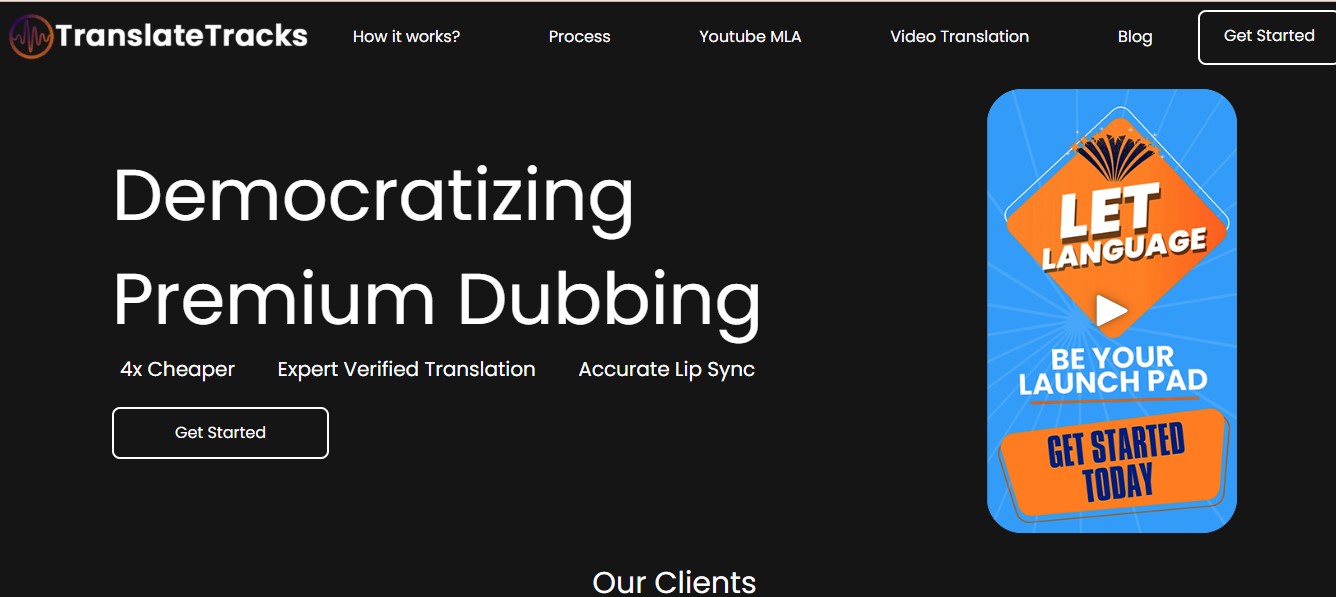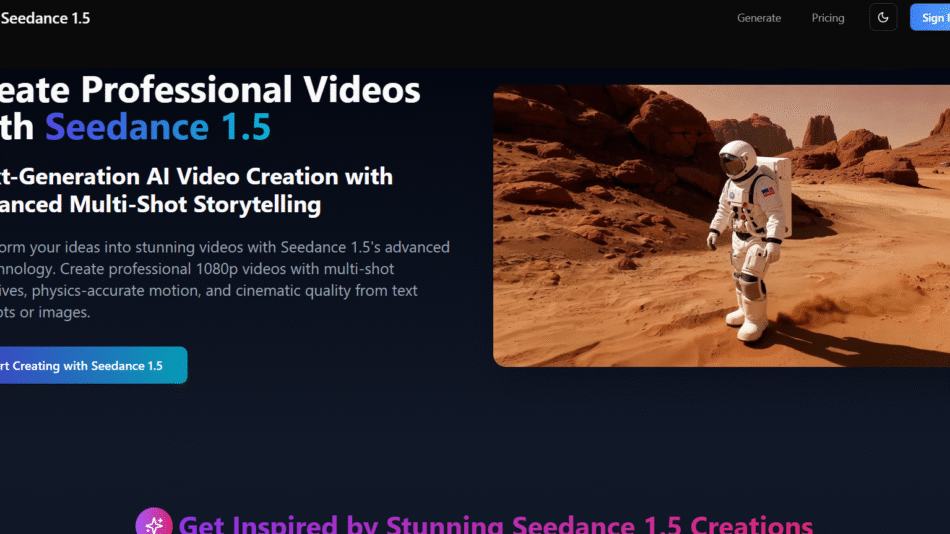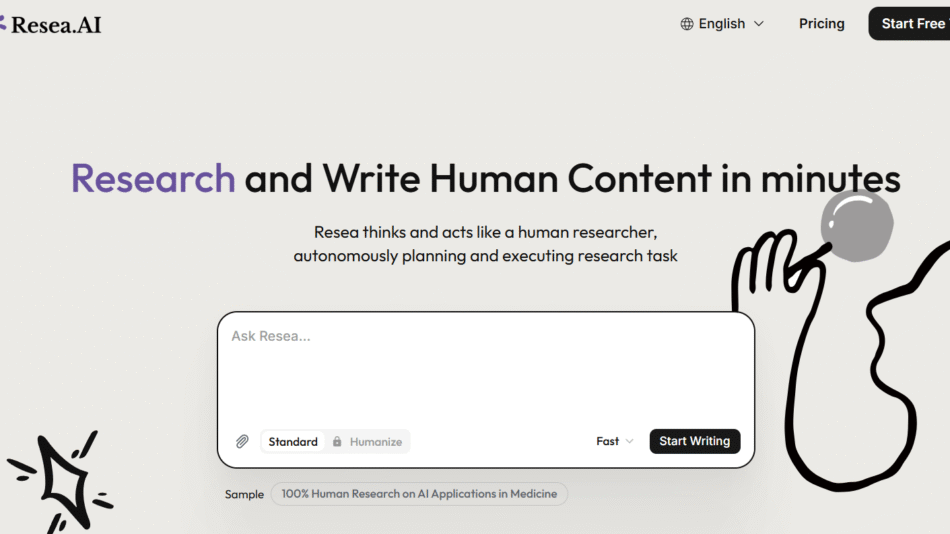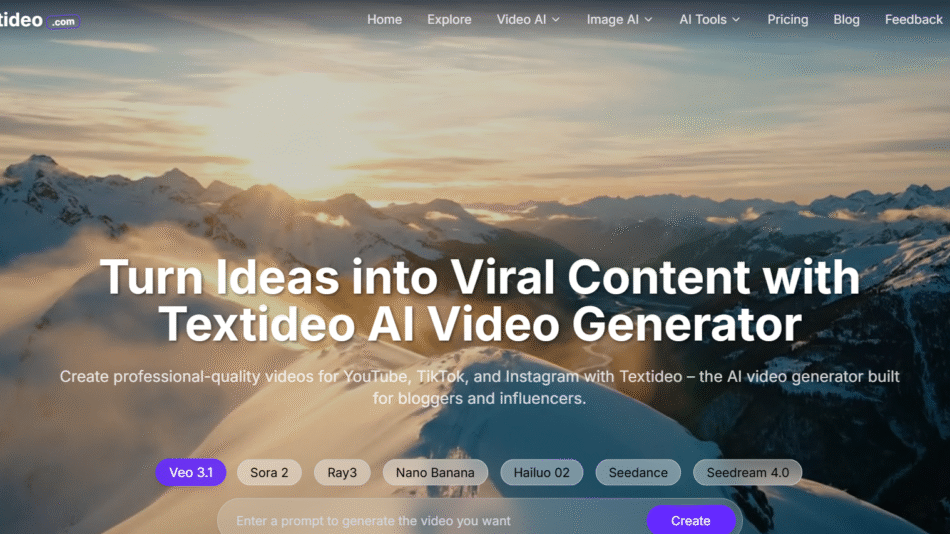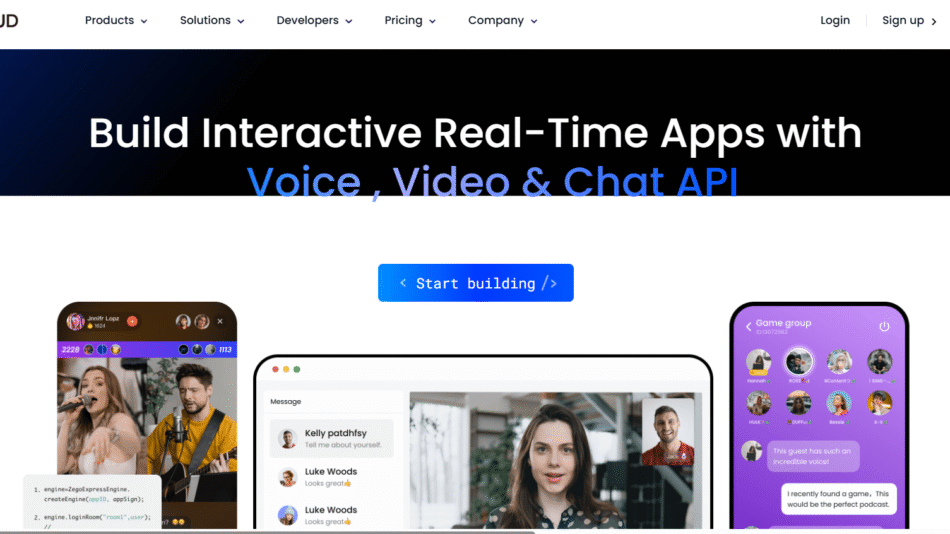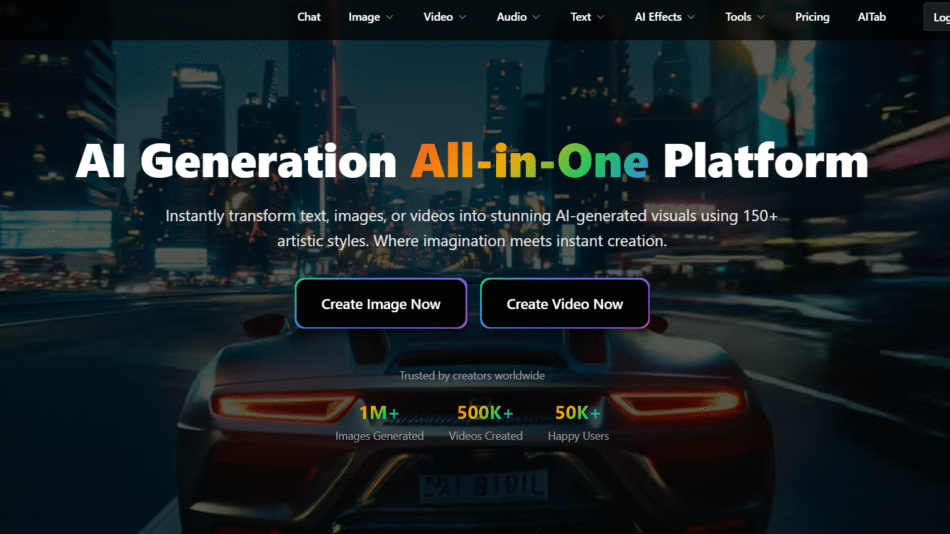TranslateTracks is an AI-driven music and audio translation platform that allows users to convert songs, voiceovers, and other audio files into multiple languages while maintaining original vocal styles and emotional tone.
The platform is designed for musicians, content creators, podcasters, and businesses looking to expand their reach to global audiences through seamless AI-powered translation.
Key Features of TranslateTracks
AI-Powered Song & Voice Translation
- Translates songs, podcasts, and voiceovers into multiple languages.
- Preserves original vocal quality, pitch, and tone for natural results.
Automatic Lyric & Vocal Synchronization
- AI ensures translated lyrics match the original melody and timing.
- Avoids manual lyric adjustments with smart AI syncing.
Multi-Language Support
- Supports multiple languages for global music distribution.
- Ideal for artists expanding to international markets.
High-Quality AI Voice Replication
- Clones singer or speaker’s voice for natural-sounding translations.
- Maintains emotion and articulation in different languages.
Instrumental & Acapella Separation
- AI separates vocals and instrumentals for precise translation and mixing.
- Users can adjust translated vocals without affecting the music track.
Custom AI Voice Adjustments
- Allows fine-tuning of pitch, speed, and vocal style for personalized output.
- Users can modify vocal expression to suit cultural nuances.
Fast & Scalable Translation Process
- AI automates large-scale audio translation without manual work.
- Reduces cost and time compared to traditional voice dubbing.
Music & Content Platform Integration
- Supports direct export to streaming platforms like Spotify, Apple Music, YouTube, and SoundCloud.
- Works with video editing software and podcast platforms.
How Does TranslateTracks Work?
Step 1: Upload Audio File
- Users upload a song, podcast, or voice recording.
Step 2: Select Target Language
- Choose from multiple language options for AI translation.
Step 3: AI Translates & Synchronizes
- AI recreates the vocal performance in the new language.
- Adjusts lyrics to fit the melody naturally.
Step 4: Review & Edit
- Users can fine-tune pronunciation, tone, and expression.
- AI provides options for vocal style adjustments.
Step 5: Export & Share
- Download translated tracks for music distribution, podcasts, or video projects.
Use Cases of TranslateTracks
1. Music Industry & Global Song Distribution
- Helps musicians translate songs into different languages for international audiences.
- Maintains original singing style while adapting lyrics accurately.
2. Podcasters & Audio Content Creators
- Enables multilingual podcasts and voiceovers without re-recording.
- Expands podcast reach to non-English-speaking audiences.
3. Film, TV, & Advertising Localization
- AI-generated multilingual voiceovers for movies, ads, and shows.
- Eliminates the need for professional dubbing.
4. E-Learning & Educational Content
- Converts educational videos and training courses into multiple languages.
- Maintains original speaker’s tone for effective learning.
5. Video Game Audio Localization
- AI translates game dialogues and character voiceovers.
- Ensures authentic voice preservation across languages.
Pricing Plans of TranslateTracks
TranslateTracks likely offers different pricing plans based on audio length, translation quality, and feature access. For accurate pricing, visit the official TranslateTracks website.
Estimated Pricing Tiers
- Free Plan – Basic translations with watermarks.
- Pro Plan – High-quality AI translations, multiple languages, and fine-tuning options.
- Enterprise Plan – API access, unlimited translations, and premium support.
Strengths of TranslateTracks
- AI-Powered Multilingual Translation – Converts audio content into multiple languages with natural vocals.
- Time & Cost Efficiency – Eliminates manual re-recording and expensive translation services.
- Maintains Vocal & Musical Integrity – Keeps original singing and speaking style intact.
- Integrates with Music & Content Platforms – Works with Spotify, YouTube, and podcast platforms.
- Scalable for Large Projects – Ideal for music labels, content creators, and localization teams.
Drawbacks of TranslateTracks
- Limited Free Plan – High-quality translations require a paid subscription.
- AI Limitations in Expression – Some emotional nuances may not fully match human dubbing.
- Requires Manual Adjustments for Accuracy – Users may need to fine-tune pronunciation and pacing.
Comparison: TranslateTracks vs. Competitors
TranslateTracks vs. Voicemod AI
- Voicemod AI specializes in real-time voice changing.
- TranslateTracks focuses on AI-powered music and audio translation.
TranslateTracks vs. ElevenLabs
- ElevenLabs provides AI-generated voice cloning and text-to-speech.
- TranslateTracks is designed for music translation and vocal synchronization.
TranslateTracks vs. Dubverse
- Dubverse offers AI dubbing for videos and presentations.
- TranslateTracks is built for songs, podcasts, and music content.
Customer Reviews and Testimonials
Positive Feedback
- “TranslateTracks helped us release our song in 5 different languages without hiring multiple singers!” – Music Producer
- “The AI perfectly matched the original vocals when translating our podcast!” – Podcaster
Constructive Criticism
- “Some words needed manual tweaking to fit the song’s melody better.” – Music Artist
- “Would love to see more language options for niche markets.” – Film Localization Manager
Conclusion: Is TranslateTracks Worth It?
TranslateTracks is a cutting-edge AI-powered audio translation tool, ideal for musicians, podcasters, and content creators looking to expand their reach to global audiences. Its ability to translate songs and voice recordings while maintaining vocal style makes it a valuable tool for localization and content distribution.
While it may require some manual fine-tuning, its AI automation, vocal replication, and scalability make it a powerful alternative to traditional translation and dubbing methods.
